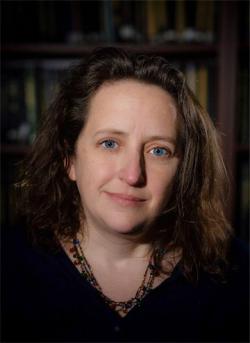Jennifer Mapes, an assistant professor of geography at ĚÇĐÄVlogĆĆ˝â°ć, developed an interactive mapping project that reimagines how people connect with the places they live. Using 3D printing, data visualization and storytelling, Mapes' work explores the South End neighborhood in Kent, Ohio.

The South End was historically home to laborers who built and worked on the railroads. “The majority of the homeowners were first-generation Eastern European immigrants and African Americans who moved north during the Great Migration,” Mapes said.
Before the 1970s, only larger cities had access to neighborhood-scale data from the U.S. Census. For smaller communities, records were handwritten. Mapes's project sheds light on the South End’s essential role in Kent’s history, growth and culture.
Ideas Sparked
The inspiration for the project didn’t come from a classroom or lab, but from Mapes’ daily walk to her child’s school, Holden Elementary, which serves the South End.
“We walk to school every day, and although I don’t technically live in the South End, I pass through it regularly,” Mapes said. “As a geographer, I began noticing small but telling details in the landscape.”
What began as simple awareness grew into a question: How could this neighborhood’s story be told in a way that was engaging, accessible and educational?
From Observation to Innovation
Mapes considered several ways to present the project before landing on the idea of 3D printing. The goal was to create a learning experience that was both visual and tactile—especially for children in the community.
“I had this idea in my head to do something really tangible that kids could get their hands on,” she said. “Holden Elementary has 3D printers, and there’s been a lot of excitement around the technology. I wanted to go further and use 3D printing as part of a broader educational experience.”
The result was an interactive 3D map of the South End, with individual buildings printed to scale and wired with lights. People could press buttons to illuminate different parts of the neighborhood, with each light representing a data point or historical narrative.
The project became an innovative form of geographic storytelling—one that brought history and data to life.